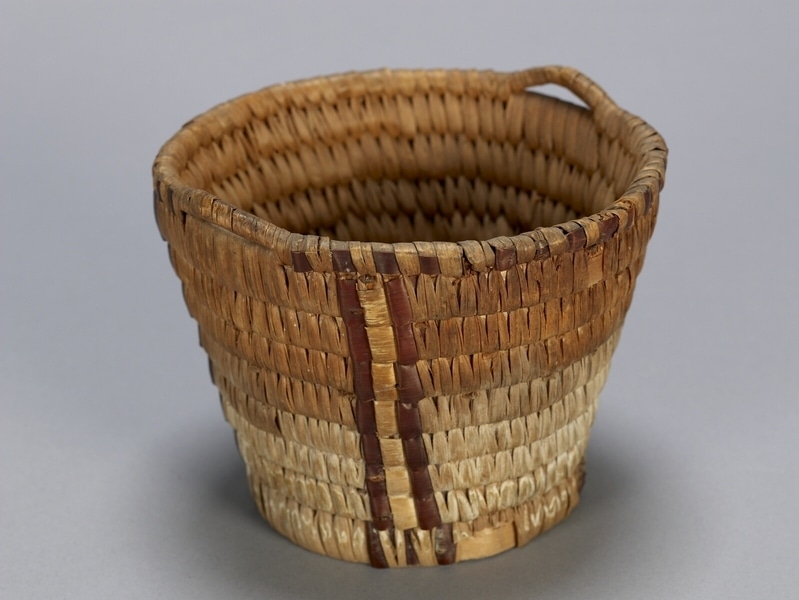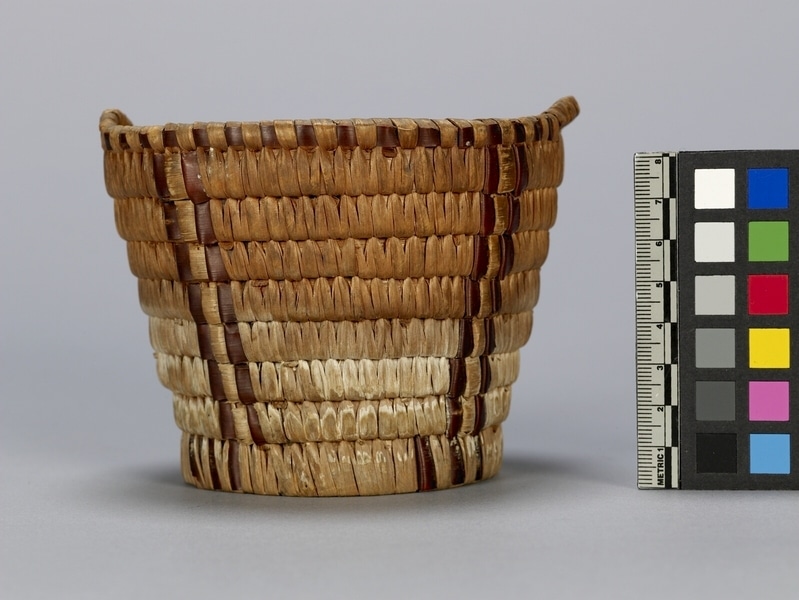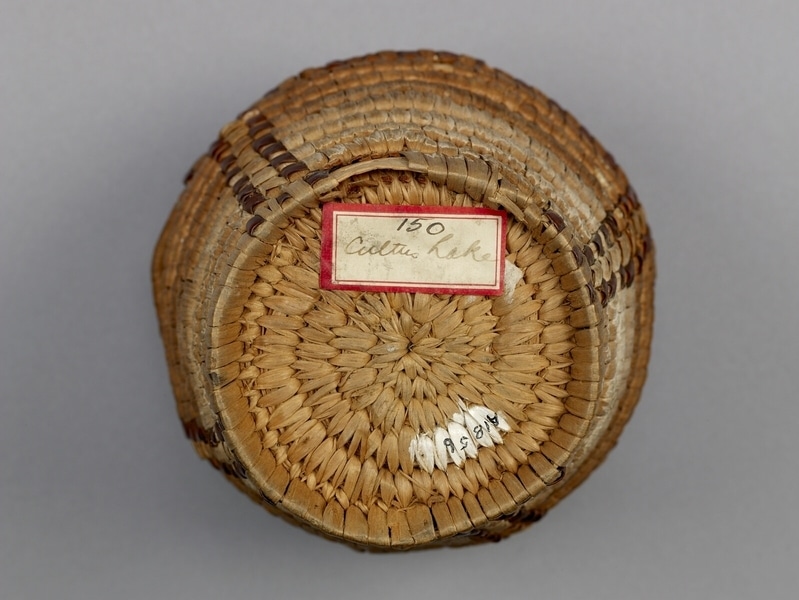Trinket Basket Item Number: A1856 from the MOA: University of British Columbia



Description
Basket with simple interlocking coiled work, bifurcated stitches, and watch-spring base construction with a foot one slat high. Overcast rim separates to form two small handles. Decorated with imbricated designs. The rim is beaded in red cherry bark. The body has partial imbrication of four vertical continuous panels, three stitches wide, in red cherry bark, bullrush, and red cherry bark. The foot also has some beading in red cherry bark.
History Of Use
Coiled basketry traditionally had many uses. It was used for storage of foods, medicines and personal belongings. Some baskets were used for cooking and boiling water, while others had more private uses. Haeberlin and Teit (1928) suggest that in the past not all women were basket makers, but that the skill became more widespread during the early and middle twentieth century when basketry was highly collectible and it became a source of income for many local First Nations women. Basket making declined after the 1950s, but it is still present in many Coast Salish communities and interest is growing.
Cultural Context
basketry; tourist art
Item History
- Made in British Columbia, Canada before 1934
- Collected in Cultus Lake, British Columbia, Canada between 1893 and 1934
- Owned by George H. Raley before November 1948
- Received from H. R. MacMillan (Funding source) and George H. Raley (Seller) during November 1948
What
- Name
- Trinket Basket
- Identification Number
- A1856
- Type of Item
- basket
- Material
- cedar root, cherry bark and cat-tail grass ?
- Manufacturing Technique
- coiled, imbricated and overcast
- Overall
- height 8.9 cm, diameter 11.4 cm
Who
- Culture
- Coast Salish: Sto:lo: Soowahlie
- Previous Owner
- George H. Raley
- Received from
- H. R. MacMillan (Funding source) and George H. Raley (Seller)
Where
- Holding Institution
- MOA: University of British Columbia
- Made in
- British Columbia, Canada
- Collected in
- Cultus Lake, British Columbia, Canada
When
- Creation Date
- before 1934
- Collection Date
- between 1893 and 1934
- Ownership Date
- before November 1948
- Acquisition Date
- during November 1948
Other
- Item Classes
- basketry
- Condition
- good
- Accession Number
- 1960/0224